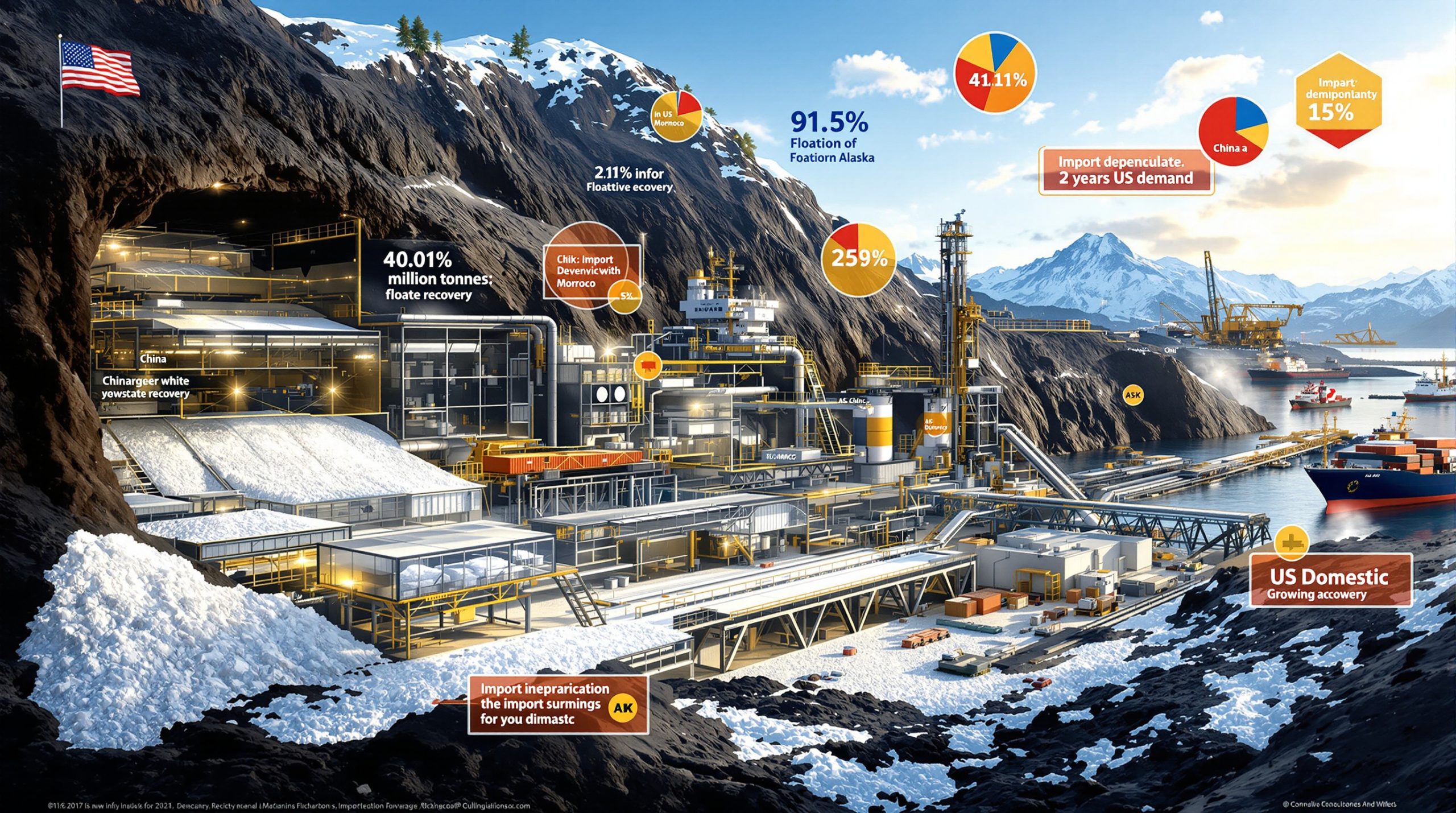Understanding Harmony Gold's Financial Milestone
The gold mining sector has witnessed an extraordinary financial achievement as Harmony Gold Mining Company reached an unprecedented net cash position of R10.8 billion (US$592 million) as of March 2025. This represents a remarkable 49% increase of R3.5 billion from the R7.3 billion (US$386 million) reported at the end of December 2024, showcasing the company's exceptional financial performance within just one quarter.
The company's financial strength is further evidenced by a 20% increase in gold revenue, which reached R50.9 billion (US$2.8 billion) for the nine months ended March 2025. This surge was primarily driven by favorable market conditions, with the average gold price received rising by 25% to R1.45 million/kg (US$2,497/oz) compared to the same period in 2024.
Despite facing operational challenges, Harmony Gold maintained strong financial discipline, improving underground recovered grade by 2% to 6.28g/t – significantly outperforming the South African industry average of approximately 5.5g/t. This grade improvement has been crucial in sustaining healthy profit margins despite various production setbacks.
Key Financial Performance Indicators
Harmony Gold's financial performance has been shaped by several key metrics that highlight the company's resilience and operational efficiency:
- Gold revenue: Increased by 20% to R50.9 billion (US$2.8 billion) for the nine months ended March 2025
- Average gold price received: Rose by 25% to R1.45 million/kg (US$2,497/oz)
- Underground recovered grade: Improved by 2% to 6.28g/t
- All-in sustaining cost (AISC): US$1,150/oz, comparing favorably against the industry average of US$1,300/oz
These indicators collectively showcase Harmony's ability to capitalize on favorable market conditions while maintaining operational discipline, enabling the company to remain on track to meet its full-year production guidance despite various challenges.
What Factors Drove Harmony Gold's Financial Success?
The Gold Price Effect
The extraordinary financial performance of Harmony Gold can be attributed primarily to the substantial increase in gold prices throughout 2024 and early 2025. With gold trading near all-time highs, the company benefited from a 25% increase in the average gold price received compared to the same period in the previous year.
This price surge has been driven by multiple global economic factors, including geopolitical tensions, inflationary pressures, and central bank policies. Harmony Gold's strategic decision to maintain minimal hedging positions allowed the company to fully capitalize on this favorable price environment, translating directly to improved cash flow and strengthened balance sheet.
Understanding current gold market analysis helps explain why Harmony's performance has been so strong during this period.
"Our disciplined approach to capital allocation ensures we capture maximum value from current gold price levels while maintaining operational resilience for potential market volatility." – Beyers Nel, CEO
High-Grade Mining Operations
Mponeng Mine Performance
The Mponeng mine has been instrumental in driving Harmony Gold's exceptional financial results, contributing significantly to the company's strong net cash position. As one of the world's deepest and highest-grade gold mines, Mponeng's geological advantage comes from its access to the Carbon Leader Reef, known for exceptionally high-grade narrow reef deposits.
This mine has consistently delivered grades exceeding the company average, helping Harmony maintain robust margins despite production challenges experienced elsewhere in the portfolio. The strategic importance of Mponeng is reflected in the company's decision to allocate R3.5 billion to high-grade ore development at the mine between 2025–2027.
Hidden Valley's Contribution
The Hidden Valley mine in Papua New Guinea has continued to deliver exceptional performance, supporting Harmony's overall financial results with consistent high-margin production. This operation has contributed approximately 12% of group output despite facing global logistical challenges that have affected many mining operations in the Asia-Pacific region.
Hidden Valley's geographic diversification provides important strategic balance to Harmony's predominantly South African portfolio, offering natural hedging against regional operational risks. The mine's performance underscores the value of Harmony's international footprint in creating a more resilient production profile.
What Challenges Did Harmony Face During This Period?
Production Setbacks and Safety Incidents
Despite the strong financial results, Harmony Gold experienced a 6% decrease in group production to 34,587kg (1,112,000oz) compared to 36,777kg (1,182,405oz) in the same period last year. This reduction was notably better than the industry-wide average decline of approximately 10% in Q1 2025, demonstrating Harmony's relative operational resilience.
The production challenges stemmed from multiple sources that required careful management to minimize their impact on overall financial performance:
Safety-Related Production Interruptions
Safety incidents resulted in significant production downtime across several key operations:
- Fatal incidents at Joel, Doornkop, and Mponeng mines necessitated precautionary stoppages, with Joel mine experiencing 14 days of lost production in February 2025
- The company reported two fatalities after the reporting period: Joaquim Cossa at Moab Khotsong and Lebamang Setenane at Saaiplaas Reclamation Dam
These safety-related stoppages, while impacting short-term production, reflect Harmony's commitment to rigorous safety protocols. The company has made it clear that production targets will never take precedence over employee safety.
Weather and Infrastructure Challenges
South Africa experienced exceptional weather conditions that directly impacted mining operations:
- Unprecedented rainfall in South Africa disrupted electricity supply to West Wits operations
- Lightning strikes and rain damage to Eskom infrastructure affected production at multiple mines, causing approximately 18% downtime at Mponeng in Q3
- Flooding at Mine Waste Solutions prevented access to higher-grade, low-lying areas, reducing expected recovery rates
These weather-related disruptions highlight the increasing impact of climate variability on mining operations, prompting Harmony to accelerate its climate resilience planning for future operations.
How Is Harmony Addressing Safety Concerns?
Safety Strategy and Implementation
Safety remains a critical focus area for Harmony Gold, with CEO Beyers Nel emphasizing that safety is "fundamentally about consistency" rather than intensity. This philosophy has shaped the company's comprehensive approach to safety management across all operations.
The company has implemented a multi-faceted safety improvement strategy consisting of:
- Regular training and awareness campaigns, with over 200,000 training hours dedicated to safety in FY25
- Leadership development programs focusing on proactive hazard identification
- Introduction of a formal accountability model with clear safety performance metrics
- Deployment of IoT sensors for real-time hazard detection in underground shafts
- Focus on leading indicators and consistent implementation of best practices
"We're implementing a Safety Leadership Framework that emphasizes accountability at every level of the organization. Safety isn't just about procedures—it's about creating a culture where every employee feels responsible for their colleagues' wellbeing."
Safety Performance Metrics
While some operations have achieved significant safety milestones, the company acknowledges it has not yet reached its goal of zero harm, particularly following recent fatal incidents. Post-incident reviews have led to revised blasting protocols at Moab Khotsong and enhanced support systems at other operations.
Harmony's safety metrics are benchmarked against International Council on Mining and Metals (ICMM) standards, allowing for meaningful comparison with global industry practices. The company's lost-time injury frequency rate, while improving year-on-year, remains an area of focused attention for management.
What Is Harmony's Financial Strategy Moving Forward?
Capital Allocation Approach
Harmony maintains a balanced and disciplined approach to capital allocation, focusing on strategic priorities that maximize long-term value creation while maintaining financial flexibility. This approach stands in contrast to some industry peers who have prioritized volume growth over margin quality.
The company's cash management strategy consists of four key pillars:
- Sustaining high-margin production from key assets through targeted operational investments
- Investing in high-grade ore bodies at Mponeng and Moab Khotsong, allocating R1.2 billion annually to sustaining capital
- Creating long-term value for stakeholders through strategic investments in mine-life extensions
- Maintaining strong free cash flows through good mining discipline and operational excellence
This approach allows Harmony to balance near-term shareholder returns with long-term value creation, ensuring the sustainability of its operations through market cycles.
Shareholder Returns
The company's strong financial position enables it to reward shareholders with meaningful returns while ensuring long-term value creation through strategic investments. Harmony maintained a 35% dividend payout ratio of free cash flow in 2024, aligning with industry peers while preserving capital for growth initiatives.
This balanced approach to shareholder returns reflects management's commitment to creating sustainable value while maintaining the financial flexibility needed to navigate the cyclical nature of the gold mining industry.
| Financial Metric | 9MFY25 | 9MFY24 | Change |
|---|---|---|---|
| Net Cash | R10.8 billion | Not directly stated | Increased by 49% from H1FY25 |
| Gold Revenue | R50.9 billion | R42.4 billion | +20% |
| Average Gold Price | R1.45 million/kg | R1.16 million/kg | +25% |
| Gold Production | 34,587kg | 36,777kg | -6% |
| Underground Grade | 6.28g/t | 6.16g/t | +2% |
How Does Harmony's Performance Compare to Industry Standards?
Market Position and Competitive Advantage
Harmony's strong financial results position it favorably within the gold mining sector. The company's ability to maintain high underground grades and strong margins, even during production challenges, demonstrates operational resilience compared to industry peers.
Several key metrics highlight Harmony's competitive position:
- Underground grade of 6.28g/t versus the South African industry average of 5.2g/t
- All-in sustaining cost (AISC) of US$1,150/oz compared to the industry average of US$1,300/oz
- Net cash position of R10.8 billion, representing one of the strongest balance sheets in the South African mining sector
These metrics demonstrate Harmony's operational efficiency and financial discipline relative to industry standards, providing a solid foundation for future growth.
Strategic Asset Portfolio
The quality of Harmony's high-grade ore bodies at Mponeng and Moab Khotsong provides a competitive advantage, supporting sustained high-margin production and long-term value creation. These assets represent some of the highest-grade gold operations globally, with characteristics that cannot be easily replicated.
Moab Khotsong's depth (3.5km) necessitates specialized cooling systems that add approximately US$50/oz to costs, but this investment is justified by the exceptional grades that deliver superior margins even after accounting for the additional infrastructure requirements.
The geographic diversification provided by Hidden Valley in Papua New Guinea further enhances Harmony's strategic positioning, reducing exposure to South Africa-specific operational risks and providing valuable portfolio balance.
What Are Harmony's Production Outlook and Guidance?
Full-Year Projections
Despite the challenges faced in the third quarter, Harmony remains confident in meeting its full-year guidance of 45,000kg production at a grade of over 6g/t. This projection represents a modest decline from pre-pandemic levels (approximately 50,000kg in 2019) but reflects the company's focus on quality ounces rather than volume growth.
The company's robust planning processes have bolstered confidence in delivering consistent results, with underground outperformance expected to offset surface operational challenges. Harmony's grade guidance increase demonstrates management's confidence in the continued strong performance of key underground assets.
Investors looking at the gold market outlook 2025 will find Harmony's projections particularly relevant to the broader industry trajectory.
Operational Focus Areas
Looking ahead, Harmony has identified several key operational focus areas that will drive performance in the coming quarters:
- Maintaining good mining discipline to ensure consistent delivery against production plans
- Continuing to improve safety performance through leadership development and accountability
- Optimizing production from high-grade assets, particularly through accelerated development at Mponeng's 120 Level in Q4FY25
- Managing controllable factors to ensure consistent performance despite external challenges
- Automation rollout at Kusasalethu mine aimed at reducing downtime by 15% in 2026
The company is also advancing renewable energy projects to reduce dependency on Eskom's grid infrastructure, which has proven vulnerable to weather-related disruptions. These initiatives are expected to improve operational reliability while reducing the carbon footprint of Harmony's operations.
According to recent mining industry predictions, this focus on operational excellence and sustainability aligns well with broader sector trends.
FAQ: Harmony Gold's Financial Performance
What is driving Harmony Gold's record net cash position?
The primary drivers are the significantly higher gold prices, which increased by 25% year-on-year to R1.45 million/kg (US$2,497/oz), combined with strong operational performance from key assets like Mponeng and Hidden Valley. The company's disciplined capital allocation approach has also contributed to cash preservation, allowing Harmony to build a robust balance sheet despite production challenges.
How has Harmony's production been affected by recent challenges?
Production decreased by 6% to 34,587kg due to safety-related stoppages at Joel, Doornkop, and Mponeng mines, unprecedented rainfall affecting electricity supply to West Wits operations, and flooding at surface operations. Despite these challenges, underground grades improved by 2% to 6.28g/t, helping to offset some of the volume impact through higher-quality production.
What is Harmony's approach to safety following recent incidents?
The company has implemented comprehensive training programs (over 200,000 hours in FY25), awareness campaigns, leadership development initiatives, and a formal accountability model. CEO Beyers Nel emphasizes that safety requires consistent implementation of best practices rather than just intensity, with a strong focus on creating a culture of safety awareness at all levels of the organization.
How is Harmony allocating its strong cash position?
Harmony maintains a balanced approach to capital allocation, focusing on sustaining high-margin production (R1.2 billion annually at Moab Khotsong), investing in high-grade assets (R3.5 billion at Mponeng between 2025-2027), creating long-term stakeholder value through strategic investments, and rewarding shareholders with meaningful returns (35% dividend payout ratio in 2024).
Is Harmony still on track to meet its full-year guidance?
Yes, despite third-quarter challenges, the company remains confident in meeting its full-year production guidance of 45,000kg, with underground recovered grade guidance increased to over 6g/t. The company's operational resilience and focus on high-grade underground operations are expected to offset surface production challenges, allowing Harmony to deliver on its commitments to shareholders.
For investors interested in the mining sector, understanding the comprehensive mining stocks guide can provide context for Harmony's performance relative to other opportunities in the market.
Disclaimer: This article contains forward-looking statements about Harmony Gold's financial performance and operational outlook. These projections are based on current information and assumptions that may change due to various factors including gold price fluctuations, operational challenges, regulatory changes, and other risks inherent to the mining industry. Investors should conduct their own research before making investment decisions.
Ready to Capitalise on the Next Major Gold Discovery?
Gain a critical edge in identifying high-potential ASX mining opportunities before they surge in value, just like Harmony Gold's remarkable performance, with Discovery Alert's proprietary Discovery IQ model that transforms complex mineral data into actionable insights. Explore how significant mineral discoveries can lead to substantial returns by visiting Discovery Alert's dedicated discoveries page.




